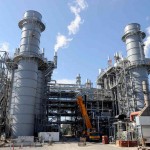 Natural gas was slightly lower in early European trading on Thursday ahead of government statistics that are likely to show a much larger than average inventory gain last week. Weather forecasts saw no significant overnight changes, keeping an overall bearish tone.
Natural gas was slightly lower in early European trading on Thursday ahead of government statistics that are likely to show a much larger than average inventory gain last week. Weather forecasts saw no significant overnight changes, keeping an overall bearish tone.
Natural gas for delivery in October traded 0.04% lower at $2.647 per million British thermal units at 08:17 GMT, shifting in a daily range of $2.651 – $2.633. The contract tumbled 2% on Wednesday to $2.648, having earlier fallen to a three-month low of $2.632.
The Energy Information Administration is expected to report today an inventory build of 88 billion cubic feet for the week ended August 28th, compared to the five-year average gain of 60 bcf and a 79-bcf increase a year earlier. A reading below 85 bcf would be considered as bullish and one above 90 bcf as bearish, with the 85-90 bcf range being neutral.
The government agency said last Thursday that US natural gas inventories rose by 69 billion cubic feet in the week ended August 21st, exceeding analysts’ median estimate of 59 bcf and the five-year average gain for the week of 61 bcf. This brought the total gas held in US storage hubs to 3.099 trillion cubic feet, expanding a surplus over the five-year average of 3.011 trillion to 2.9% from 2.7% a week earlier.
Any upside movement as a result from todays inventory report will likely be capped by bearish weather developments expected to unfold next week when cool Canadian blasts hit regions of the US. Before that, natural gas demand will be higher this week compared to last, overall moderate compared to normal, but locally high in some regions. High pressure will continue to grip the southern and eastern US through early next week but weak weather systems will prevent the ridge of high pressure from becoming too hot, NatGasWeather.com said, keeping highs over the Midwest, Mid-Atlantic and Northeast in the mid-upper 80s.
Texas, the southern Plains and the Southeast will be a bit hotter as temperatures max out in the low-mid 90s, while the West will be windy and cooler as Pacific systems track inland.
This week’s warm-up will lead to a narrower inventory gain for the September 10th report, but the mentioned localized cooler weather systems will keep cooling demand checked, resulting in another larger-than-average build. Initial estimates point to a stockpiles increase of about 80 bcf for the week ended September 4th, 17 bcf above the average, while supplies grew by 90 bcf during the comparable period a year earlier.
Next week will start with high pressure continuing to dominate much of the southern, central and eastern US, while the West will remain cooler, according to NatGasWeather.com. However, a strong cool blast will hit the northern Rockies and central US as the week progresses, potentially reaching northern Texas as well. The West Coast will gradually warm up to above seasonal as the ridge of high pressure shifts, while the East will cool.
Overall, weather sentiment remains skewed to the bearish side as cool Canadian blasts will curb cooling demand next week and more so afterwards, lining up a series of above-average inventory gains. Although the eastern ridge of high pressure could try to regain some ground in-between the Canadian systems, it won’t become strong enough to bring intense heat.
Temperatures
According to AccuWeather.com, temperatures in New York will peak at 92 degrees Fahrenheit on September 4th, 13 above usual, followed by a slight drop to the mid-upper 80s over the next seven days and a further slide to the upper 70s afterwards. Chicago will max out in the mid 80s through September 7th, above the usual 79-80, before highs drop to the low 70s over the following ten days.
Down South, readings in Houston will peak in the upper 80s and low 90s through September 15th, near the average 89-91 for the period, before easing to the low-mid 80s. On the West Coast, Los Angeles will fail to exceed 77-78 degrees the next two days, below the average 84-85, but will jump to near-seasonal over the following ten days.
Pivot points
According to Binary Tribune’s daily analysis, October natural gas futures’ central pivot point stands at $2.660. In case the contract penetrates the first resistance level at $2.687 per million British thermal units, it will encounter next resistance at $2.727. If breached, upside movement may attempt to advance to $2.754 per mBtu.
If the energy source drops below its S1 level at $2.620 per mBtu, it will next see support at $2.593. In case the second key support zone is breached, the power-station fuel’s downward movement may extend to $2.553 per mBtu.
In weekly terms, the central pivot point is at $2.694. The three key resistance levels are as follows: R1 – $2.746, R2 – $2.778, R3 – $2.830. The three key support levels are: S1 – $2.662, S2 – $2.610, S3 – $2.578.





